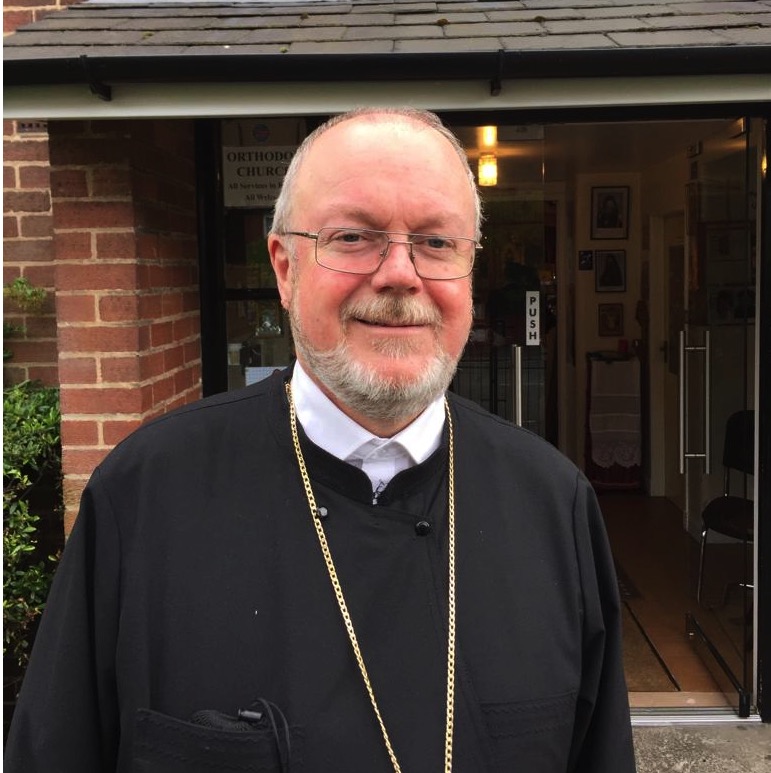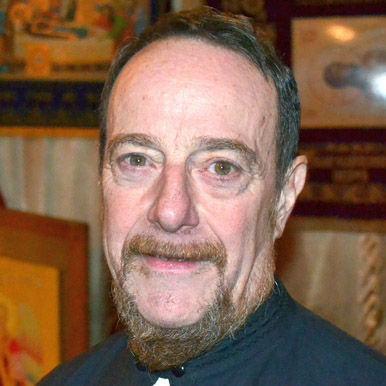The feast that we celebrate today, the Entry of the Theotokos into the Temple, is one of the twelve major feasts of the Church’s year. Yet remarkably, there are no references in the Bible to how Holy Mary at the age of three was brought by her parents, Joachim and Anna, to the Temple to be dedicated to God and to remain in the precincts of the Temple for the next nine years. The entry of the Theotokos into the Temple has been set out in Holy Tradition, especially in the The Protoevangelium of James, known also as the Infancy Gospel of James, (http://www.earlychristianwritings.com/text/infancyjames-roberts.html ). Holy Mary entered the Temple precincts as a very young child; and she emerged as a young woman who is a model for us and for the whole of humanity of how to live our lives on earth and how to find the Heavenly Kingdom. How did this happen?
Mary was taken by the High Priest into the Holy of Holies, behind the veil in the Temple where the Jewish people believed that the Presence of God dwelled. At that time, Jews believed that the fullness of God’s presence of earth was in a place. Indeed, God’s presence can still be sensed in many places today; and at times we go into a church or a place of pilgrimage, and we rightly say, “This is a holy place.” However, Mary experienced within herself the presence of Christ—in her person; and she can guide us into the presence of Christ within ourselves.
Consider the gospel and the epistle that the Church has chosen to draw us into the meaning of this feast. The gospel from the tenth chapter of St. Luke, verses 38 to 42, and from the eleventh chapter of the same gospel, verses 27 and 28, is the story of the sisters, Mary and Martha—Mary who prayed and listened to Christ so carefully, while her sister Martha worked so hard to serve everyone who came into their lives. The fourth century Egyptian monk St. Macarius the Great has interpreted this story of the sisters beautifully in his Homily XII, Q16. St. Macarius preached: “That God’s word may be made clearer, listen to this. If anyone loves Jesus, and attends to Him in earnest, and not in a casual way, but in love abides in Him, God is already devising to make some return to that soul for its love, although the man [or woman] does not know what he [or she] is to receive, or what portion God is about to give to the soul. When Mary loved [Jesus] and sat at His feet, the gift that was added to her was no casual gift. He gave her a certain hidden virtue from His own substance. The very words which God spoke in peace to Mary [had . . .] a power; and a divine power . . . filled . . . her heart. Where that power shall lodge, it [will] abide permanently, as a possession not to be taken away. For this reason the Lord, who knew what He gave her, said, Mary has chosen the good part. But after a time the things which Martha had done so eagerly in the way of service brought her to that gift of grace. She too received divine power in her soul.”
The reading from the Gospel of St. Luke concludes with the words of the woman in the crowd who cried out: “‘Blessed is the womb that bore You, and the breasts at which You nursed.’ But [Jesus Christ] said, ‘Yes indeed, blessed are those who hear the word of God and observe it.’” So this gospel is saying to us that the divine power which came upon The Theotokos came upon the sisters Martha and Mary and that we too, like the Theotokos, can be blessed as we “hear the word of God and observe it.” However, it is important to recognise that the Theotokos and Martha and Mary were all purified and illumined to the extent that purification and illumination were needed for each of them to achieve God’s will in their lives. A similar experience of purification and illumination is available to each of us.
None of us in this church are excluded from the possibility of genuine purification and illumination today and during the rest of our lives. As we each seek to gain “the mind of Christ”—the divine power that came forth from the womb of the Theotokos as the person Jesus Christ—we will not be overwhelmed. We will not be transported to some mystical vision or heavenly place. In First Corinthians, chapter 2, verse 16, St. Paul reminds us that each of us already “have the mind of Christ”—the power to see the world with spiritual eyes, as Christ and the Theotokos see the world. However, St. John Chrysostom comments wisely: “This does not mean that all the things that [Christ] knows, we know, but [rather that what we know is] of [Christ’s] mind and spiritual . . .” That is very important, helpful and humbling to see with St. John Chrysostom that although each of us have “the mind of Christ,” we do not see with our spiritual eyes everything that Christ sees. Nor do we see everything that the Theotokos sees.
The life of The Theotokos and the lives of Mary and Martha and of all of us are very different. Yet we each have a link into the Holy of Holies. We are all drawn into the Holiness of the Presence of God, whether in a place or in a person that we may, as the gospel for today says, “hear the word of God and observe it.” The epistle today from the book of Hebrews, chapter 9, verses 1 to 7, is about the “tabernacle which is called the Holy of Holies.” This is the place to which the child Holy Mary was taken behind the veil for which years later Holy Tradition states she was to spin the purple and the scarlet of a new veil.
We know from Exodus 38 and Luke 2:37, as well as the historian Josephus Flavius, that there were many living quarters around the Temple in which those who were dedicated to the service of God, like the prophetess Anna, dwelt. The entry of the Theotokos into the Temple is not recorded in the Bible. However, it is very clear indeed that those who were dedicated to the service of God did live many years of their lives in the precincts of the Temple. The Theotokos was among those holy people; and we can rejoice today at her entry into the Temple and its precincts.
The words of the Russian Orthodox pastor, St. John of Kronstadt, about this feast remain significant. St. John died at the age of 80 in 1908; and he prayed for us: “Rejoice, faithful Christians. . . .Let all celebrate with a pure heart the entry of the Mother of God into the Temple, and let all glorify and praise the Theotokos, Protector of all faithful Christians and our intercessor before Her Son. . . . Be loyal to God’s Church and come to it to be [prepared] for the Heavenly Kingdom. [Reject] all sin . . . and instead do deeds of truth and holiness, walking in the fear of God. Amen.” St. John of Kronstadt’s prayer has set forth the three-fold challenge that now confronts each of us—(1) reject all sin; (2) do deeds of truth and holiness; and (3) walk in the fear of God. Amen.
Deacon Emmanuel Kahn

 Archpriest Gregory Hallam
Archpriest Gregory Hallam
 Fr. Emmanuel Kahn
Fr. Emmanuel Kahn